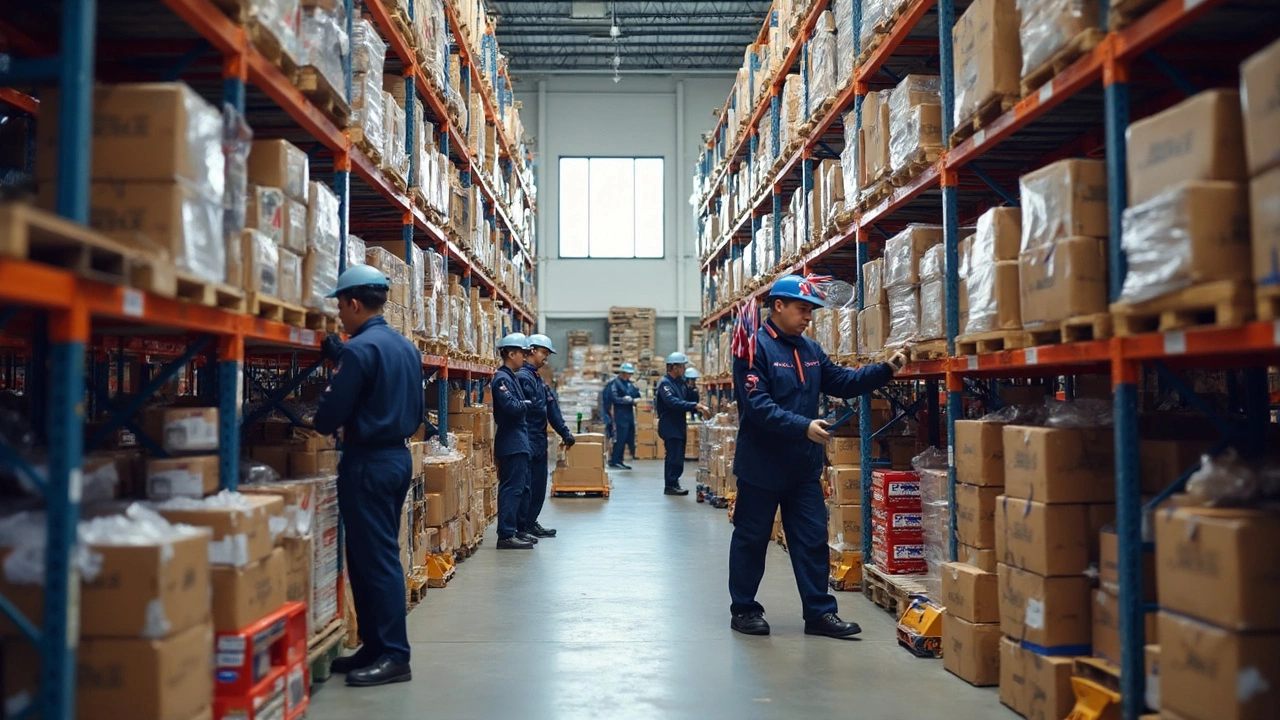Supply Chain Insights: What You Need to Know in 2025
Supply chain talks can feel overwhelming, but you don’t have to be an expert to get value. Whether you’re moving a few boxes for a home move or coordinating hundreds of pallets for a business, the right tools and know‑how make a huge difference. Below you’ll find practical advice on software, logistics partners, and the final stretch of delivery that most people overlook.
Choosing the Right Supply Chain Software
Software is the backbone of modern supply chains. A good system tells you where inventory lives, predicts demand, and routes shipments efficiently. In 2025 the top categories are Warehouse Management Systems (WMS), Transportation Management Systems (TMS), and integrated ERP platforms. Start by listing the tasks you need—like real‑time tracking, demand forecasting, or automated billing—and match them with a tool that excels in that area. Many vendors offer free trial periods, so you can test a few before committing.
Finding a Reliable Logistics Partner
Not all couriers are created equal. Large players like UPS and FedEx dominate long‑haul and international shipping, but niche carriers may beat them on price for specific routes or package sizes. Look at factors such as on‑time performance, price per kilogram, and extra services like pallet handling or overnight cut‑offs. Reading recent comparisons—like the “Best Logistics Companies in 2025” guide—can help you spot which partners consistently deliver on promises.
Last‑mile delivery is where most headaches happen. The final hand‑off to the customer can be delayed by traffic, missed cut‑off times, or unclear address data. To reduce risk, use a carrier that offers real‑time tracking and flexible delivery windows. If you ship small parcels, consider same‑day or next‑day services that guarantee a specific delivery hour. For larger loads, confirm whether the carrier can handle pallets and oversized items before you book.
Cost savings often hide in the details. For example, a 5 lb UPS shipment costs a fraction more if you ship before the cutoff time versus after. Small timing tweaks can shave dollars off each order. Similarly, comparing overnight rates between FedEx and UPS shows that one may be cheaper for domestic routes while the other wins internationally.
Beyond price, think about insurance and liability. Shipping high‑value items may require extra coverage, like the USPS $5,000 insurance option. Understanding the exact cost and claim process beforehand prevents surprise expenses if something goes wrong.
If you’re planning to scale, keep an eye on emerging terms like “smart logistics.” This reflects a shift toward AI‑driven route optimization, predictive maintenance, and real‑time visibility. Companies that adopt these technologies early often enjoy faster deliveries and lower operational costs.
Finally, remember that supply chain success isn’t just about tools—it’s about people. Roles such as supply chain director, transportation manager, and logistics analyst are among the highest‑paid in the industry. Investing in skilled staff or training can boost efficiency more than any software upgrade alone.
By focusing on the right software, choosing trustworthy carriers, and tightening up the last‑mile, you’ll keep your supply chain lean and reliable. Keep these pointers handy when you plan your next move or shipment, and you’ll stay ahead of the curve in 2025.
November 17, 2025
Evelyn Wescott
0 Comments
A warehouse isn't the biggest player in logistics. Distribution centers, fulfillment hubs, and supply chains handle far more volume, speed, and complexity. Learn what's bigger-and why it matters for your business.
October 8, 2025
Evelyn Wescott
0 Comments
Find out whether XPO Logistics functions as a 3PL, a 4PL, or both. Learn the key differences, see a service comparison, and get a checklist to choose the right model for your business.
August 5, 2025
Evelyn Wescott
0 Comments
Explore the four types of warehouse management systems, understand how each fits different businesses, and learn tips for picking the right WMS.
August 4, 2025
Evelyn Wescott
0 Comments
Curious what happens before your package heads out for last mile delivery? Here’s every step in the journey, with insider tips and real-world examples.
July 30, 2025
Evelyn Wescott
0 Comments
Understand the essential e-commerce logistics processes that make or break fast delivery, seamless returns, and happy online shoppers. Practical, clear, and informative.
July 7, 2025
Evelyn Wescott
0 Comments
Wondering if logistics is just moving boxes or all about equations? Unpack how much math hides behind logistics, supply chains, and real-world examples, plus tips to thrive.
June 29, 2025
Evelyn Wescott
0 Comments
Curious what a logistics company really does? Get the inside scoop on their roles—from warehousing to freight and supply chain management—plus tips and key facts.
June 26, 2025
Evelyn Wescott
0 Comments
Discover how ecommerce logistics works, from storing products to shipping and deliveries, and learn practical tips for fast and reliable online order fulfillment.
June 18, 2025
Evelyn Wescott
0 Comments
Curious about what really makes an e-commerce business run smoothly? This article breaks down the seven key rules of logistics that every online shop should know. You’ll learn practical strategies to deliver fast, keep costs in check, and make customers happy. Expect real-world tips you can actually use, and a look at what makes today’s e-commerce giants tick. It’s everything you need to build (and keep) a loyal customer base.
June 6, 2025
Evelyn Wescott
0 Comments
Logistics systems keep products and services flowing smoothly from manufacturers to customers. This article breaks down the three main activities every logistics setup relies on: inventory management, transportation, and order processing. You'll discover how these steps work together, real-world tips, and what makes logistics software a game-changer. Plus, there are practical ideas for streamlining these areas using digital tools. If you want your business to avoid costly delays, this is a must-read.
June 3, 2025
Evelyn Wescott
0 Comments
Curious if logistics is really tough to pick up? This article breaks down what makes logistics tricky (or not), explains what comes with the territory, and offers real-world tips on getting the hang of things. Get clear answers on skills you’ll need and common roadblocks. Understand what to expect in logistics training and work, so you can decide if it’s the right path for you.
June 2, 2025
Evelyn Wescott
0 Comments
Curious about who sits at the very top in logistics companies? This article unpacks the highest position in logistics, explains what they actually do day-to-day, and how you can get there. Learn what it takes to lead huge teams, make big decisions, and manage the flow of goods worldwide. You’ll discover career tips, real success stories, and the truth about challenges in these roles. Perfect if you want to level up your logistics career or just see what goes on behind the scenes.















